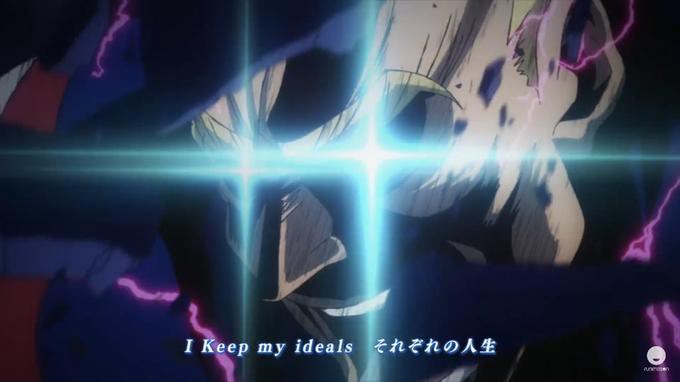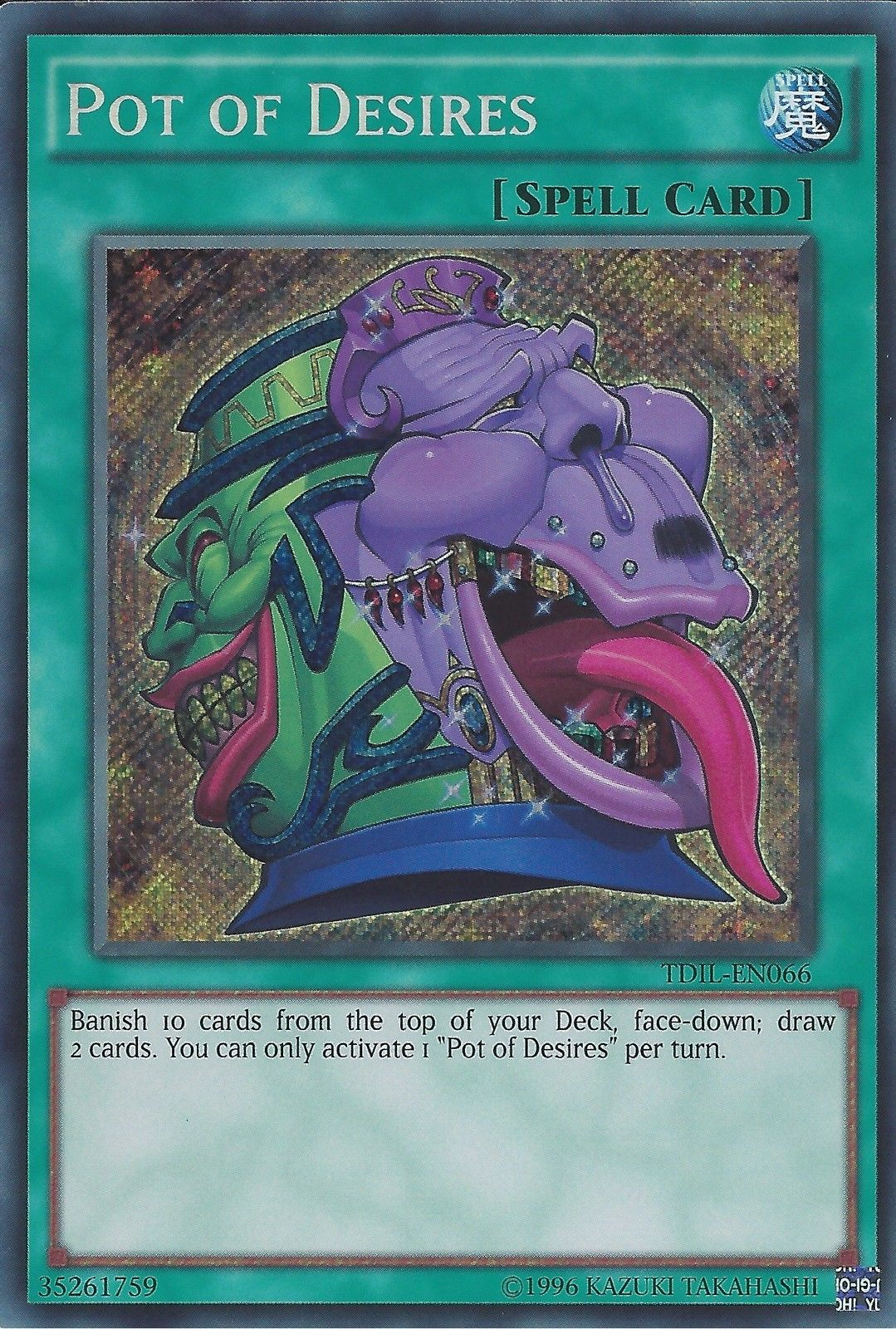Before I dump my essay on you about how hard my dick gets for Pot of Desires I should explain how we got to this point. I took Math for the Liberal Arts at Norwalk Community College back in Fall of 2017 cause it was the last math class for my associates degree. I fucking despise math and I could go on a whole rant about how much math they force you to take no matter what your major is but I?ll save that for another day. What matters is that this was a math class for people who hate math and it relied way more on word problems and tying the abstract concepts of math which was much easier to comprehend for me.
Playing Yugioh and Pokemon as an adult finally made me realize the value of understanding statistics, numbers and probability since they were core concepts to the game. This class covered that stuff in great detail and that easily made it the best math class I ever took. It even had a class near the end of the semester about managing money, credit and taxes, you know the actual math most people need to know, which was worth the price of admission alone. When the teacher gave us a math project where we could pick what to do, I knew it had to be about Yugioh.
The best card to represent the mathematical probability in the game was my favorite card, Pot of Desires. Like Pot of Greed, it has a very simple effect, Draw 2 cards. But the cost was banishing 10 cards from your deck. This made it a very controversial card on release and a divisive topic amongst my Yugioh clique.
 I masturbate to this screenshot every night
I masturbate to this screenshot every night
Of course when it came out in August 2016 in the set The Dark Illusion all of the top decks and pro players were playing it. It?s been a main deck staple in almost every deck for almost 2 years now. Of course, this card was worth a lot of money when it first came out and it probably had something to do with it?s controversy. Interestingly enough, when it was reprinted a year later for only a few dollars, all the critics of Pot of Desires were quiet. In fact the same people that criticized the card saying it will never catch on now play with the reprinted copies in their decks. People are inherently hypocritical beings by nature, and you are free to change your mind. But motherfucker I was there on day 1 for Pot of Desires. I keep my ideals.
 mfw I use my Secret 1st Ed Pot of Desires against someone whomst has the reprint
mfw I use my Secret 1st Ed Pot of Desires against someone whomst has the reprint
So when it came time to write about Pot of Desires for my class I vomited almost 10 pages. I was able to tie it into mathematical probability thanks to the video ?Yu-Gi-Oh! How Good is Pot of Desires? A Mathematical Approach? by the Youtuber Cimo. Pretty much all of the statistics used in the following essay are from that video and I didn?t cite him in the original essay so this is my way of making up for it.
As for how I did in this assignment, I got away with bloody murder, I literally sent the rough draft for early submission so he can review it and give me feedback and I get this back
 When you give them a rough draft that you haven?t reviewed or revised and they give you an A, what incentive is there to do better?
When you give them a rough draft that you haven?t reviewed or revised and they give you an A, what incentive is there to do better?
I planned on going super in depth on every possible aspect of the card, from covering the probability of the opponent countering it with Ash Blossom & Joyous Springs, to the probability of you having PSY-framegear Gamma toncounter the counter. I even thought breaking down the cards interactions with That Grass Looks Greener. But that?s way too extra for my teacher who never played the game. Luckily for people who aren?t familiar with Yugioh nowadays this essay was made for you. Without further ado, the Yugioh essay that somehow got me an A in my Math Class.
 What does Pot of Greed do?
What does Pot of Greed do?
Pot of Desires is a Yugioh card that turns itself into 2 new cards from your deck at the cost of removing 10 cards from the top of your deck from the game. This is a powerful card in the Game of Yugioh, a Trading Card Game where you build a deck of 40?60 cards filled with Spells, Monsters and Traps to battle it out with your opponent in a best 2 of 3 match where you try to reduce your opponent?s life points from 8000 to 0.
Pot of Desires has been a very controversial card since its release that has divided the player base on whether it should be played. I am going to break down the arguments for and against this card, the pros and cons of this card and the probability of this card going off and what effect it will have on your deck. I will show you through the power of math and probability the power of this card and such that even someone who does not understand a lick of Yugioh can appreciate its power.
The best place to start is the card itself. Pot of Desires is a Normal Spell Card that has the following effect. ?Banish 10 cards from the top of your Deck, face-down; draw 2 cards. You can only activate 1 ?Pot of Desires? per turn?. Let?s break it down in layman?s terms. Spell cards are green colored cards that can be activated during the players turn. There are of course multiple exceptions to this rule as this game has been around for 20 years so there are cards that challenge the notion of a spell card. But a normal spell card means you can only activate it during your turn, before or after you enter the battle phase, which is the phase where monsters battle, life points are drained and duels are won. So being a normal spell card means you can just play this card straight from your hand. The actual effect is drawing 2 cards, the banishing 10 cards face down is the cost to play this card which is defined by the semi colon in its card text. The once per turn is the restriction on the cards accessibility which can be a huge downside. The banish 10 face down is probably the trickiest concept to understand so let me break that one down.
Banishing in the game of Yugioh is an extremely powerful form of removal. Cards are normally sent to the Graveyard (a.k.a the discard pile) when they are destroyed or used. But as the game has evolved there are cards that gain effects from the graveyard which can make the graveyard a second hand of cards you can use. To counteract this there is a mechanic called Banish that is like sending a card to the graveyard, but in this case, it is removed from the game period. There is not even a banished zone in the game, you are simply to remove the card from any marked zones on the field. There are few ways to get back a banished card so it is supposed to be a more permanent form of removal. Or at least it used to be, but as the game has progressed there are several cards that can shuffle banished cards into the deck, add them to your hand, move them into the graveyard and even summon them back onto the battlefield.
To balance Pot of Desires and prevent it from being abused by all the cards that work with the banish mechanic the game?s R&D department introduced a more permanent way of removing a card. The face-down banish mechanic is like Banish but the key difference is that since it is face down, the opponent cannot look at the cards like they could with your graveyard or banished cards and the games cannot recognize what those cards are. The player who has face-down banished cards can look at their own of course since it?s a secret area like their hand. If they couldn?t that could lead to gameplay issues with using cards that require certain cards to be in the deck. But since the game cannot recognize what type of card a face down banished card is, that means a card that works with banished monsters/spells/traps cannot be used on face-down banished cards. Because if you activate a card that summons a banished monster, the game does not recognize a face-down banished monster as a monster even if you can confirm that it is. It?s a very confusing concept that logically only works because the people who design the game says that is how it works so I would not question it that much. It just works. That cost to banish the top 10 cards of your deck face down is the primary reason why Pot of Desires is the most controversial card in the game?s history.
There are 2 big restrictions on Pot of Desires, the first is the cost to remove the top 10 cards of your deck face down, and the 2nd is that you can only activate 1 of it per turn. If that activation is negated by another card you can use a second one since the game state does not acknowledge that you activated the first one. The people who hate this card argue that the cost to banish 10 cards face down can seriously harm your deck and screw you over. Unlike in other card games like Poker, Yugioh has multiple cards that can fetch other cards from the deck. Using a card to add or summon another card is a key factor in pretty much any competitive deck. The problem is that what if you banish the card you need to add? That means while that you drew 2 new cards off 1 card, now several other cards in your hand do nothing and your decks win condition is gone. It?s like using nitro on your car?s engine but the engine explodes. The problem with this argument is that Pot of Desires is rarely going to banish the key cards if you built your deck right, and that?s where probability comes in.
If I would compare Yugioh to any other card game, I would compare it to Black Jack. It has some major differences, such as the part where you and the opponent are using different decks constructed using your own cards, but they share a very important thing in common, it?s all about managing risk and probability. A lot of times in Yugioh if you built your deck right and memorized the combos and interactions you will just win because you had a better hand then the opponent. Sometimes you will just lose because you drew a bad hand, and there is no mulligan in this game. Sometimes the opponent will have the counter to your play that immediately decides the game. And the times where you both open poorly, or both draw good cards, that is where the skill and interaction decides the game. The way to beat the odds and consistently win in this game is about managing probability, thorough your card choices in deck building, as well as the choices you make during the game. These are the same ways you play around Pot of Desires cost.
To get around Pot of Desires banishing a key card in your deck. First, we must know how many cards we can play in our deck. In the game of Yugioh you can play a minimum of 40 cards, and a maximum of 60 cards. You draw 5 cards from the top of your deck at the start of the game, and you draw 1 extra card if you go second when you start your turn, and then each player draws a card at the start of their turn after that. You can play up to 3 copies of any card, unless that card is on the Forbidden and Limited List, in which case you can only play the amount the game maker tells you, which can be anywhere from 2?0. For reasons I do not understand, Pot of Desires is still allowed at 3 copies at the time of this writing. With very few exceptions, you want to play a 40-card deck in this game since you want to see your key cards as soon as possible, and you want to play 3 copies of the most important cards of your deck, since you will see them more often if you play more of them. If you play 3 copies of a card in a 40 card deck you will have a 33.76% chance of seeing at least 1 copy of it in your opening hand. Whereas if you play 1 copy of a card in a 60-card deck, the maximum number of cards you can play, you have an 8.33% chance to draw it in your opening hand. That?s a huge difference because that goes from seeing the card over 1 in every 3 games to less than 1 in 10 games. In the context of a best 2 out of 3 match that means on average, assuming you always go to game 3 you will see the card in at least one of your opening hands if you play 3 copies in a 40-card deck. That can be huge depending on the card, in this case with Pot of Desires that?s a 33.76% chance to turn your opening 5 cards into 6, or 6 cards into 7 if you go second and get the extra draw. In terms of card advantage, a card that trades for 2 more cards is considered a +1 in card economy since you used that card to get 2 more cards, the first card you gain pays off the cost of using that card and the second one is a profit. Having more cards means you have more options than the opponent, which usually wins the duel because you can do more things and if the opponent stops those things, that uses up their own cards and eventually they will run out, while you can keep playing. So, resolving a Pot of Desires can easily give you the edge needed to win the duel.
But the problem some people have with this card is that it can banish key cards from your deck. So, what are the odds of that happening? Well assuming Pot of Desires is the first card you activated going at the start of the duel and you play a minimum of 40 cards you will be banishing 10 cards from a 35-card deck, since you draw 5 for your opening hand. You have a 45.8% chance to banish 1 copy of a card you play 3 of in a 40-card deck and a 46.1% chance to do it if you go second since you will draw an extra card. That sounds high and it is, but something to keep in mind is that you rarely need all copies of a card to win or to even use its effect. Not to mention that Yugioh is a fast-paced game, games rarely go past turn 6 so those cards you lost were not something you were going to see anyway. Banishing 2 copies of a card you pay 3 of in a 40-card deck is 17.2% going first and 18% going second. Now the worst-case scenario is banishing all 3 copies, which means you cannot use the card for the rest of the duel. That has a 1.8% to banish all 3 copies of a card and it?s 2% if you go second. That is incredibly low, that is practically happening 2 in every 100 activations of a card. In a tournament setting whether it?s a National Championship with many rounds or a small group of players hosting a local tournament that?s 4 rounds that?s unlikely to ever happen. To the person who banished all 3 copies of a vital card 3 games in a row and lost a match, that?s not very comforting to read. But the law of large numbers means that over time the average chance will reflect this reality.
Now the chances of you banishing the lone copy of a card in your deck is 28.6% going first and 29.4% going second. That is likely to happen so unless the card is limited to 1 by the tournament Forbidden and Limited or it is a card that you do not want to draw, but need it in the deck to resolve another card effect. I would recommend playing more than 1 copy of a key card in a deck using Pot of Desires. Now if you are playing 2 copies of a card you have a 42% chance to banish 1 copy of it and 42.8% if you go second. The chances of banishing all 2 copies is 7.6% and 8% going second. Playing 2 copies of a card is a great insurance against Desires since it is low chance to banish all of them. Instead of playing 1 copy of a card it is better to play at least 2 copies of it for this very reason. The numbers don?t lie, you are unlikely to banish the key cards in your deck with Pot of Desires so long as you play at least 2 copies. With few exceptions, you want to play more than 1 copy of a card cause if it?s good enough to be in your deck, you probably want to see it often. Not to mention that you do not always have to activate the card right off the bat. Yugioh has a lot of cards that add another card from your deck to your hand or field. You can activate those cards before you activate Pot of Desires which will take the card out of your deck, effectively eliminating the chance of that card getting banished. This is an important skill in managing the risk with this card.
I have been talking a lot about the probability of the banish effect but the draw effect is where the card really shines. Assuming you did not draw the card in your opening 5 or 6 and it did not get banished by the cost of Pot of Desires you have an 8% chance to draw the one and only copy of a card in your deck and an 8.3% chance going second. This is assuming you play a 40-card deck and Pot of Desires is the first card you play. There is a 15.3% chance of drawing 1 copy of a card you play 2 with a 15.9% chance going second. The chance of drawing all 2 copies off Pot of Desires is 0.3%, and 0.4% going second this also means that if you play Pot of Desires from your hand, since you now only have 2 copies left in your deck, these are the odds you will draw another copy of it.
Players who are against this card talk about how drawing another Pot of Desires is awful and they are not wrong. Pot of Desires can only be played once per turn and you do not want to activate more than one copy during a duel, since then you have a good chance of banishing all your good cards. Not to mention that since each copy takes out 12 cards from your deck, you can only activate 2 copies of it during a duel since you will have only 11?9 cards left in deck after using 2 which if you do not have enough cards in the deck to resolve the effect then you cannot use the card. Drawing even one copy of Pot of Desires off Pot of Desires effect can effectively negate the card advantage you gain from this card. Since you will use 1 card to gain 2 cards, one of which cannot be used that turn, so it?s a 0 in card advantage until your next turn or if you can discard it for the cost of another card. Drawing 2 copies off one is game over since you lost 10 cards from your deck to draw 2 cards you cannot use this turn, one of which can never be activated. But the probability of that is the same as the probability of drawing all 2 copies of a card in your deck, which is 0.3%. That is statistically impossible. Pot of Desires came out in August of 2016 and I got my playset of the card around then and have been playing it ever since. In the year and a half of me playing this card in nearly every single deck I have never drawn 2 Pot of Desires off another one. Now drawing 1 of them off its effect happens quite a lot. I swear to god sometimes all my Pot of Desires are exactly 12 cards apart in my deck, you would think they get banished but I always seem to draw them off the effect.
To counter this, some players argue that you should only play 2 copies of this card, since you do not want to draw multiples of it and it reduces the chance of this happening. But the probability of you drawing 2 copies of Pot of Desires is 3.64% going first and 5.36% going second if you play 3 copies in a 40-card deck. If you only play 2 then that chance is 1.28% and 1.92% going second which is a lower chance. But that?s still possible and if you are so worried about something that has a small chance of happening then the only possible course of action to prevent that is to only play 1 copy of it. But then that means you are not seeing this card as often as you would if you play 3 since playing 1 copy means you have a 12.5% chance of drawing it going first and a 15% chance going second. If you play 2 copies that?s a 23.72% chance going first and 28.08% going second. While you may be minimizing the chance of drawing multiple Pot?s that also means you will not see it as often as you would be if you ran 3. The chances of drawing Pot of Desires off the first one?s effect when you play 2 is the same probability of drawing the lone copy of card in your deck off Desires effect which is 8% going first and 8.3% going second. That?s still high so playing 2 copies is getting the worst of both worlds. You will not see the card as often and when you do you can still draw another copy off it.
The best solution, and the general deckbuilding tip is to play 3 copies of a card you want in your opening hand. This gives you the best assurance of seeing the card while not losing it to the cost of Desires. Not to mention that if a 3-of is not in your hand and it did not get banished by Desires you have a 22% chance to draw 1 copy and a 22.8% chance to draw it going second since you will be drawing 2 cards from a 25?24 card deck. Drawing 2 copies of a 3-of is much lower with it being 1% going first and 1.1% going second. The reason why Pot of Desires is good is that it rewards you for good deckbuilding. You want to play the maximum amount of an essential card in the minimum deck size to give you the highest chance of drawing it. Pot of Desires has the lowest possible chance to banish a 3-of or 2-of so it synergiezes well with what you are already doing, which is maxing out on the essential cards. Not to mention that you will have the highest possible chance to draw your key cards if you use it, since never drawing the card is worse than potentially losing it. Therefore, the best deckbuilding tip, and the one that many tournament winning strategies employ is to run a 40-card deck with 3 copies of the cards you want in your starting hand, with Pot of Desires being one of them.
![[Yu-Gi-Oh!] Somehow my Math Teacher gave this an A: My Mathematical Argument for Pot of Desires](https://911weknow.com/wp-content/uploads/2020/09/yu-gi-oh-somehow-my-math-teacher-gave-this-an-a-my-mathematical-argument-for-pot-of-desires-628x275.png)

